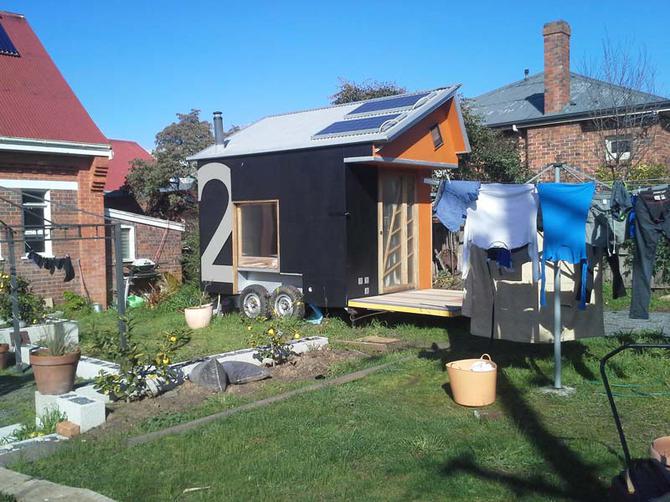One of the big things that can push someone into homelessness is overcrowding. Too many people in a single dwelling can create a tense and stressful environment, sometimes forcing people who can’t cope out onto the streets.
In collaboration with a local youth shelter and training organisation, the University’s Architecture and Design program developed an innovative approach to providing crisis accommodation for youth at risk of homelessness—and simultaneously provided a vehicle for employment training.
Faculty members Richard Burnham and Robing Green supervised Architecture & Design students in the design and prototyping of an easy-to-build, adaptable and highly transportable one-person accommodation unit called The Castle. Built on a trailer and incorporating solar power, Castles can be towed and used pretty much anywhere, including the backyards and driveways of households experiencing ‘spatial stress’. The Tasmanian Government has purchased and deployed six as part of its Affordable Housing Action Plan.
From a spatial design perspective, The Castle explores the ‘Tardis effect’—making a small space feel larger—and demonstrates sustainability through efficient use of a renewable resource. Castles are designed using custom software—developed at the University—which produces precision-cut plywood components. These can be assembled with just a rubber mallet and screws and don’t require skilled tradespeople.

From a community and personal welfare perspective, there are clear benefits not only in terms of the provision of alternative accommodation but also in terms of providing employment training. Early iterations of The Castle led to the University and Youth Futures successfully attracting Federal Government funding to develop a youth training and employment program focussed on construction of the dwellings.
The collaborative model has since been adopted by Scouts Western Australia who worked with youth justice participants to assemble scout huts, flat-packed and shipped from the Architecture and Design workshop.
Also:
- University staff and students have teamed up with local governments in Hobart to work on the transformation of the city through arts and culture strategies.
- The University of Tasmania Autism Network (UTAN) includes academics, doctors, parents and social workers, all combining skills to assist children on the autism spectrum to integrate into mainstream schools.
About the researchers
Dr Richard Burnham firmly believes community engagement is an important aspect to learning. In this respect, he feels architects, designers and academics have a responsibility in making their skills available to those who might otherwise have no access to them. He also sees the process of making as an integral part of designing.
Robin Green
Robin Green is Workshop Technical Services Manager for Architecture and Design, based on the Inveresk Campus.
Interested in conducting your own research? Apply now to become a research student.
Interested in partnering with the University of Tasmania? Find out more about partnerships.